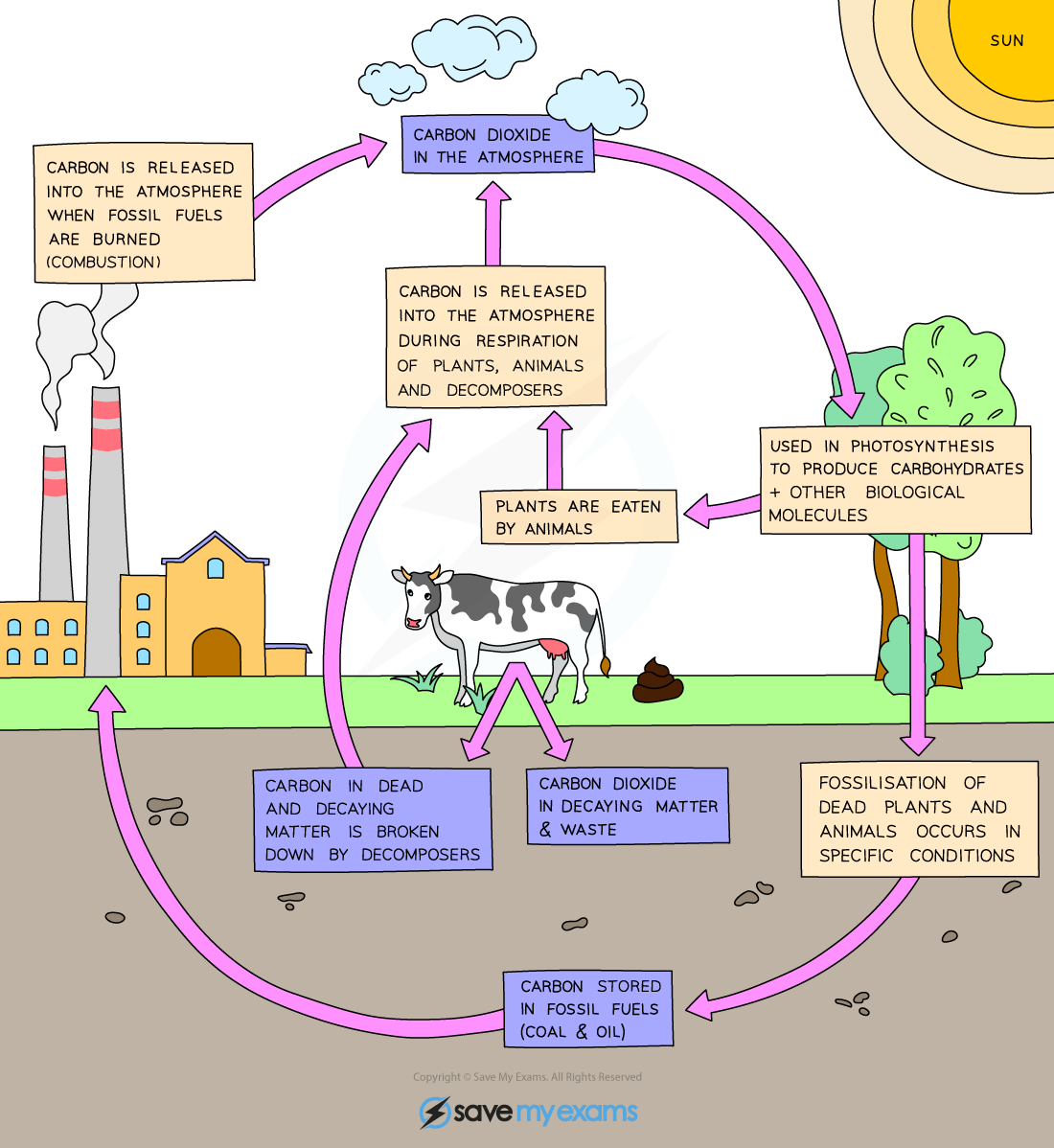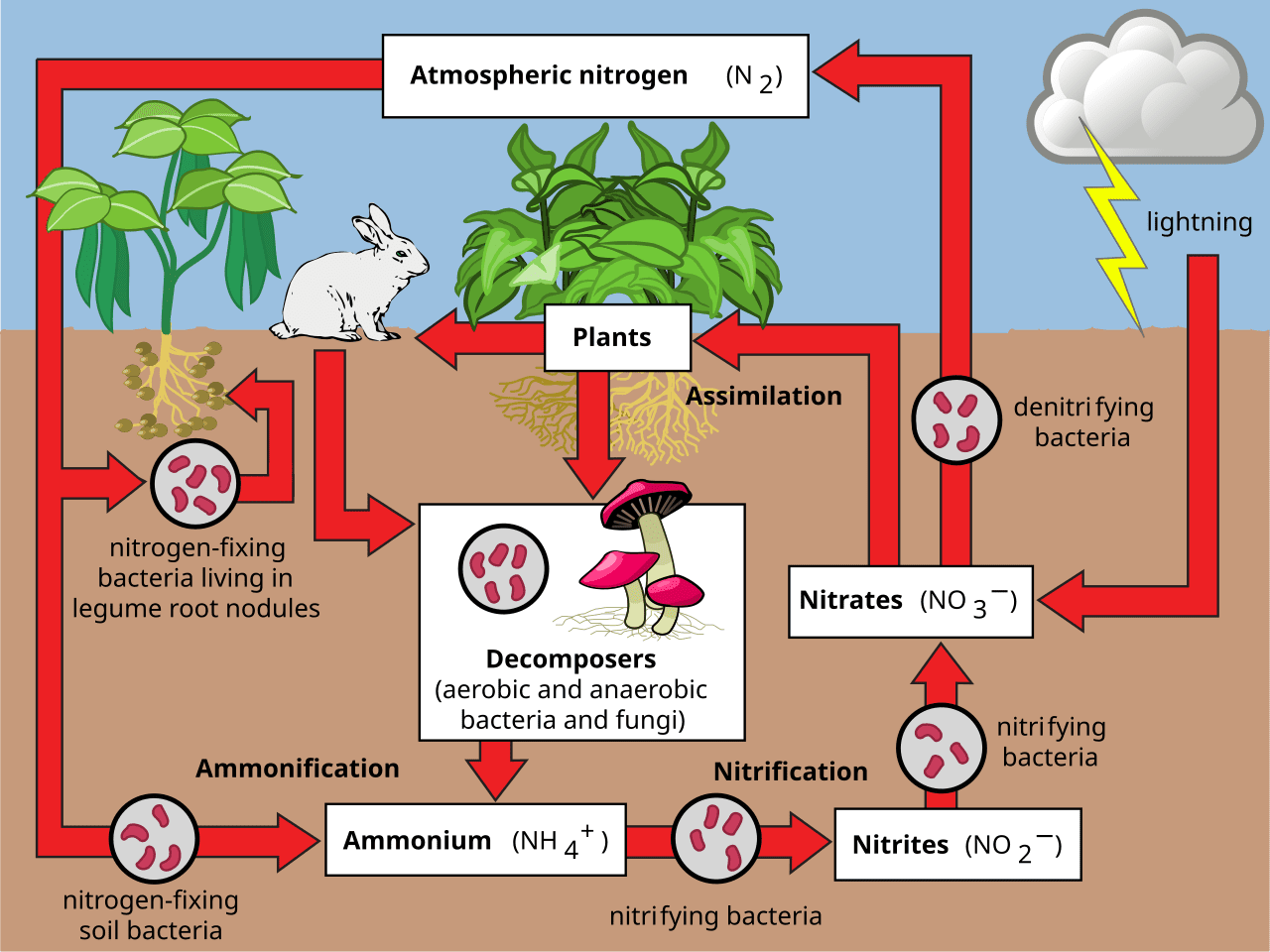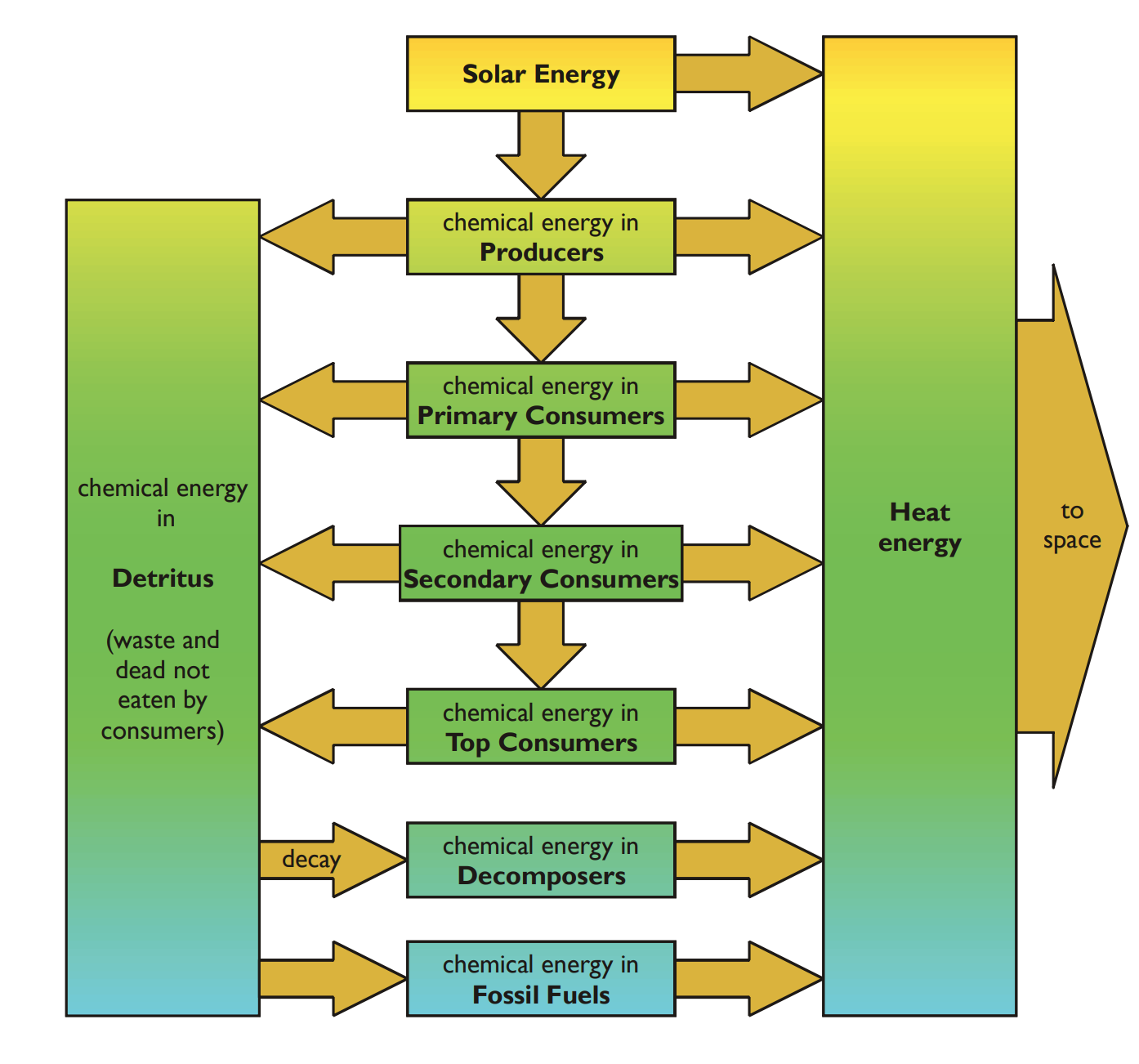10.2 - Energy transfer through ecosystems
1/20
There's no tags or description
Looks like no tags are added yet.
Name | Mastery | Learn | Test | Matching | Spaced |
|---|
No study sessions yet.
21 Terms
How are simple inorganic molecules (i.e. nutrients) cycled between biotic & abiotic environments?
Assimilated (i.e. converted into vitamins/minerals) from the abiotic environment by producers & microbes → then built into complex organic molecules

What is the difference between nutrients & minerals?
Major nutrients are taken from the environment in the form of carbon dioxide & water
Other nutrients are usually acquired as soluble mineral ions
Describe the carbon cycle
Animals respire, releasing CO₂ into the air
Photosynthetic organisms absorb this CO₂ for growth
When animals eat plants, carbon is transferred to them
After death, animals & plants decompose or fossilise; decomposers (detritivores) also release CO₂ through respiration
Fossil fuels from dead organisms release CO₂ when combusted
Additionally, CO₂ reacts with water to form acid rain, which erodes limestone, releasing more CO₂

What is the human impact on the carbon cycle & how can the balance of CO₂ in the air be maintained?
Human impact on carbon cycle:
Deforestation & combusting fossil fuels results in increased emission of CO₂ into the air
Maintaining balance of CO₂ in the air:
Use sustainable resources (e.g. carbon neutral biofuels)
Reforestation
What is the only route by which carbon dioxide is fixed into organic carbon compounds?
Photosynthesis (balanced by respiration, decay & combustion, which all return carbon dioxide to atmosphere)
What is a carbon source?
An ecosystem that releases more carbon dioxide than it accumulates in biomass over the long term
Sources include farmland & areas of deforestation
What is a carbon neutral ecosystem?
One where carbon dioxide fixation & release are balanced over the long term
E.g. mature forests → new growth = death & decay
What is a carbon sink?
An ecosystem that accumulates more carbon dioxide in biomass than it releases over the long term
Occurs when conditions aren’t suitable for decomposers (e.g. too cold, dry, acidic)
Sources include peat bogs, ocean floors & growing forests
What is decomposition?
The breakdown of detritus (non-living organic matter) by decomposers (e.g. saprobionts & detritivores)
What are saprobionts?
Microbes (bacteria & fungi) that live on detritus
Use saprobiotic nutrition: don’t ingest their food, but instead use extracellular digestion (secrete digestive enzymes into detritus & absorb soluble products)
Absorbed products are broken down in aerobic respiration to inorganic molecules
What are detritivores?
Small invertebrate animals (e.g. earthworms & woodlice) that eat detritus
Use holozoic nutrition: ingest food, digest in gut, absorb soluble products & excrete insoluble waste
How do detritivores speed up decomposition by helping saprobionts?
Physically break up large plant tissue (e.g. leaves/twigs), which is excreted as faeces → large surface area, making it more accessible to saprobionts
Aerate soil → helps saprobionts respire aerobically
Excrete useful materials (e.g. urea) → sapriobionts can metabolise
What is the importance of the nitrogen cycle?
Air is 78% nitrogen, but animals & plants can’t obtain nitrogen through gas exchange
Nitrogen is needed by all living organisms to make proteins, amino/nucleic acids & ATP
What are the key processes to the nitrogen cycle?
Nitrogen fixation
Ammonification
Nitrification
Assimilation
Denitrification
Describe the nitrogen cycle
Nitrogen fixation
Nitrogen gas is converted into ammonia/ammonium ions, which plants can use
Carried out by: nitrogen-fixing bacteria, lightning & Haber process
Ammonification
Organic nitrogen from dead organisms/waste material is converted into ammonium ions
Carried out by: saprobionts
Nitrification
Ammonium ions are converted into nitrite, then nitrate ions, which plants absorb (requires aerobic conditions)
Carried out by: nitrifying bacteria
Assimilation
Plants absorb nitrates from soil via roots
Animals obtain nitrogen by eating plants/other animals
Denitrification
Nitrates are converted back into nitrogen gas into atmosphere (requires anaerobic conditions)
Carried out by: denitrifying bacteria

How much energy is transferred between trophic levels?
10% - only a small amount of the energy available to an organism is transferred to the next trophic level
Some is never taken in & some is lost before being transferred

Why is some energy never taken in at each trophic level?
Some parts of food aren’t eaten or are indigestible
Some energy is lost as heat by respiration
Plants can’t use all light energy as some is in the wrong wavelength (i.e. green)
What is the productivity of an ecosystem?
The amount of biomass produced by that ecosystem each year:
can be measured in units of biomass (kg m⁻² yr⁻¹) or units of energy (MJ m⁻² yr⁻¹)
What is gross primary & secondary productivity?
GPP = rate of energy incorporated into plant biomass
GSP = the total biomass assimilated by consumers
What is net primary productivity?
Chemical energy store in plant biomass after respiratory losses to the environment have been taken into account
What is the equation to calculate net primary productivity?
NPP = GPP - R